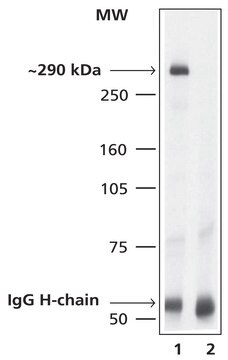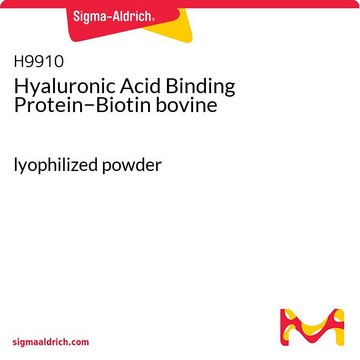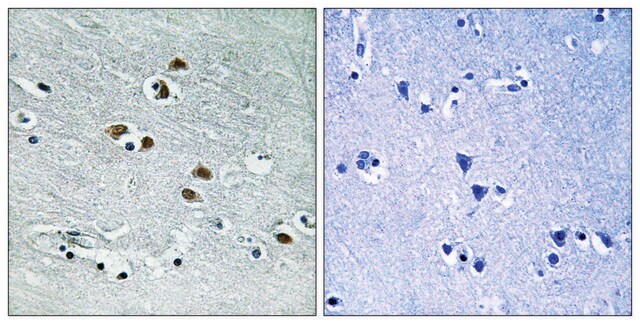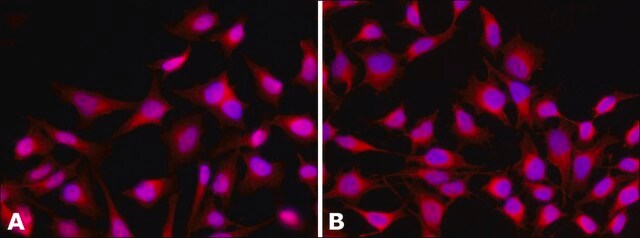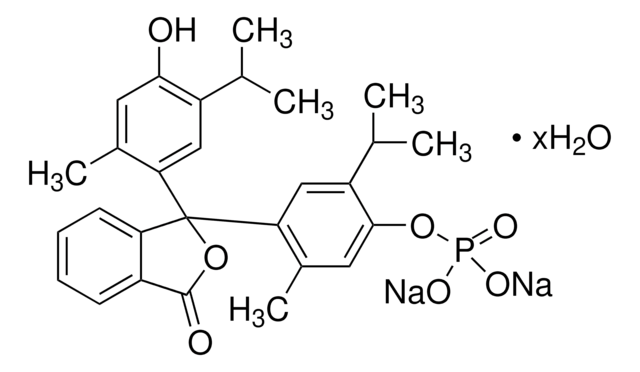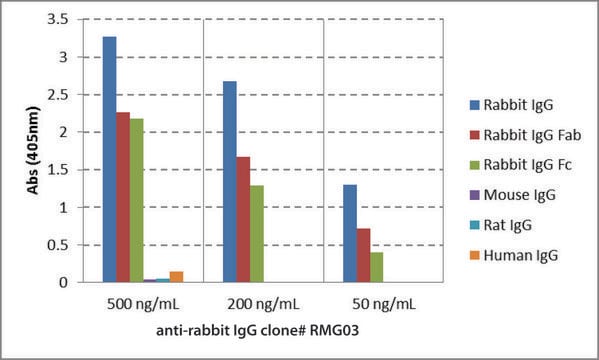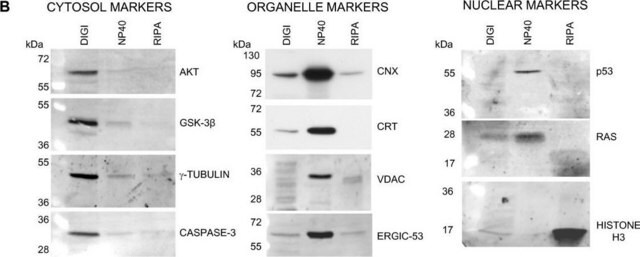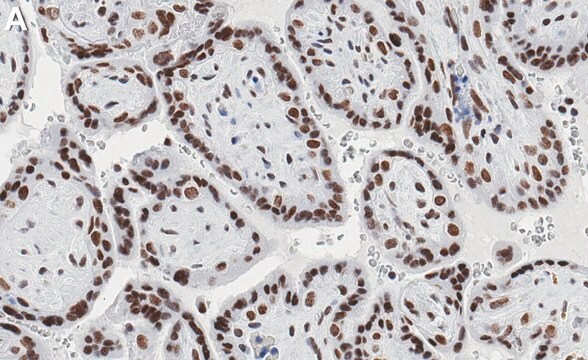H9536
Anti-Histone Deacetylase 4 (HDAC4) (DM-15) antibody produced in rabbit

affinity isolated antibody, buffered aqueous solution
Sinonimo/i:
Anti-HDAC4
About This Item
Prodotti consigliati
Origine biologica
rabbit
Livello qualitativo
Coniugato
unconjugated
Forma dell’anticorpo
affinity isolated antibody
Tipo di anticorpo
primary antibodies
Clone
polyclonal
Stato
buffered aqueous solution
PM
antigen ~140 kDa
Reattività contro le specie
human, mouse, rat
Convalida avanzata
recombinant expression
Learn more about Antibody Enhanced Validation
tecniche
immunoprecipitation (IP): 10-20 μg using RIPA extract of HeLa nuclei
indirect immunofluorescence: 1:250 using HEK 293T cells expressing recombinant mouse HDAC4
microarray: suitable
western blot: 1:1,000 using whole extracts of mouse NIH3T3 cells
western blot: 1:500 using whole extracts of rat brain
N° accesso UniProt
Condizioni di spedizione
dry ice
Temperatura di conservazione
−20°C
modifica post-traduzionali bersaglio
unmodified
Informazioni sul gene
human ... HDAC4(9759)
mouse ... Hdac4(208727)
rat ... Hdac4(363287)
Descrizione generale
Specificità
Immunogeno
Applicazioni
- Western Blotting
- Immnofluorescence
- Immunoprecipitation
Azioni biochim/fisiol
Stato fisico
Stoccaggio e stabilità
Esclusione di responsabilità
Non trovi il prodotto giusto?
Prova il nostro Motore di ricerca dei prodotti.
Codice della classe di stoccaggio
12 - Non Combustible Liquids
Classe di pericolosità dell'acqua (WGK)
WGK 1
Punto d’infiammabilità (°F)
Not applicable
Punto d’infiammabilità (°C)
Not applicable
Scegli una delle versioni più recenti:
Possiedi già questo prodotto?
I documenti relativi ai prodotti acquistati recentemente sono disponibili nell’Archivio dei documenti.
Il team dei nostri ricercatori vanta grande esperienza in tutte le aree della ricerca quali Life Science, scienza dei materiali, sintesi chimica, cromatografia, discipline analitiche, ecc..
Contatta l'Assistenza Tecnica.